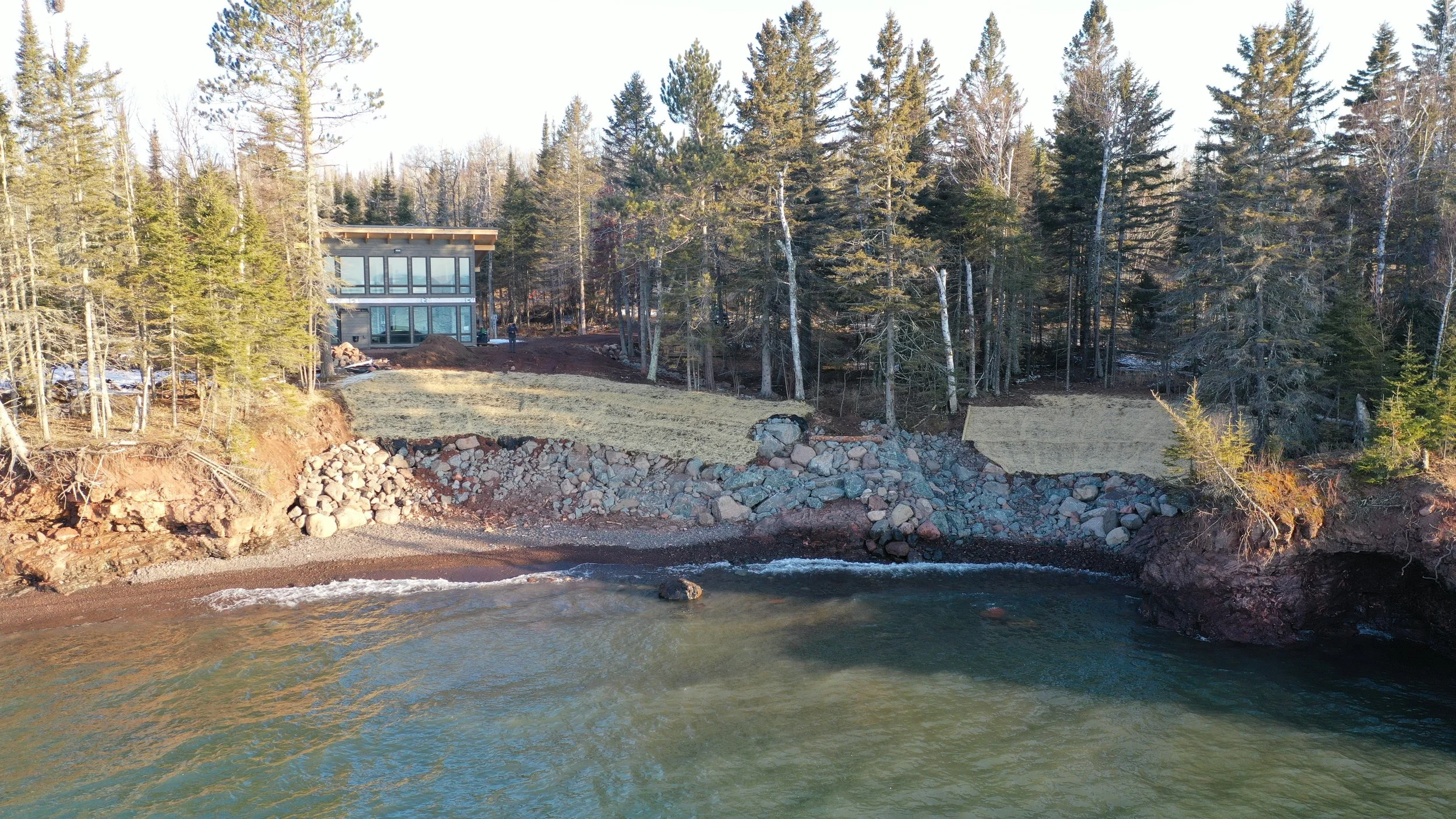
GUIDE TO SHORELINE EROSION
The Great Lakes boasts some of the most beautiful scenery in all of North America. It’s home to 3,300 miles of shoreline and teems with life supported by diverse ecosystems. However, the Great Lakes shoreline is facing devastating erosion that’s presenting social, environmental, and economic impacts that will surely be felt for years. While we can’t stop coastal erosion on Lake Michigan, Lake Huron, and Lake Superior completely, we can know its causes and take steps to reduce its effects for this generation and the next.
What is Shoreline Erosion
What Causes Shoreline Erosion
What are High-Risk Erosion Areas?
While the Great Lakes region in general is experiencing increased rates of erosion, some areas are being hammered harder than others. These swaths of land that are being most rapidly chipped away are referred to as high-risk erosion areas (HREAs). Those that average one foot of recession per year (or more) over the last 15 years are classified as a high-risk erosion area. In some areas around the Great Lakes, the rate of bluff retreat is up to seven feet per year.
The Michigan Department of Environment, Great Lakes, and Energy determines which parts of the shoreline are HREAs. By comparing current and historical aerial photography, the department measures the shorelines, making a determination of an area’s status through those findings. They’ve published a map dictating the current HREAs in the United States. The department has determined that approximately 250 miles of shoreline along Lakes Michigan, Superior, and Huron are rapidly eroding and are posing a serious threat to existing structures.
Environmental Impacts of Coastal Erosion
Tips to Minimize Shoreline Erosion
Erosion is a fact of life for much of the Great Lakes shoreline. But there are steps you can take to do your part to minimize erosion.
Leave Vegetation Alone
If you’ve got vegetation on your property, leave it alone! Allow shoreline vegetation to remain in as natural a state as possible. Don’t disturb native plants.
Mow Infrequently
If you must mow your yard, do so sparingly. Michigan State University Extension recommends mowing no more than two times per season. To preserve the natural ecosystems on your property, they also suggest leaving vegetation at a height of 20 inches or higher.
Create Narrow Paths to Access Water
One of the best parts of living on the lakes is having front-door access to the water. When you’re creating a path from your home to the shore, keep it as narrow as possible. The pathway should be made of sand, not hard surfaces like concrete or stone, to preserve the natural habitat.
Choose Seawall Alternatives
Seawalls are very common around the lakes, but they can cause more harm than good. When thinking through how to protect your property—and the property of your neighbors—consider alternatives to traditional steel or stone seawalls.
When Rebuilding, Keep the Original Foundation
The less invasive and disruptive you can be of the land around the shoreline, the better. That’s not to say that you’re forbidden from making improvements to your home or other structures on your property. However, one way to reduce damage to the natural land near the coast is to preserve your home’s original foundation. If you’re rebuilding or doing serious renovation, do everything you can to preserve the slab. This might feel more costly or inconvenient on the front end, but this action can go a long way in reducing soil erosion.
Build New Homes Inland
But if rebuilding on an old slab isn’t an option for whatever reason, take new construction inland. The farther away from the consistently eroding shore, the better—not just for the environment, but for your home’s structural integrity as well!
Keep Land or Property as Natural as Possible
Pretend there’s a giant “Do Not Disturb” sign across the coasts of the Great Lakes. One reason that the water levels are so high as of late is due to mankind’s negative impact on the environment. In order to minimize further erosion, we need to work to keep this land as natural as possible. Consider leaving your property “raw.” In other words, let the grass grow, don’t install landscaping, don’t pour concrete unless necessary, etc.
Options if Your Home is in a High-Risk Area
In an ideal world, your home or property wouldn’t be in a high-risk erosion area. But if you do fall into that category, you still have options to build, renovate, and thrive on the shores of the beautiful Great Lakes.
Get a Permit
If you live in a HREA, you’ll need a permit for construction depending on the project. If you’re building a house, addition, garage, outbuilding, or other structure; installing or upgrading a septic system or commercial building; or are completing reconstruction or restoration of a pre-existing home, you’ll need to secure a permit. You can contact the Michigan Department of Environment, Great Lakes, and Energy if you have permitting questions.
Maintain the Existing Vegetation
Nature has a way of fending for itself, even in the direst situations. The natural vegetation on your coastal property is a natural erosion deterrent. The more vegetation on your land, the more secure the soil, and the less likely it will succumb to erosion. If you do have to cut down trees, leave the stumps and roots. These will continue to hold soil in place.
Plant Native Vegetation
Plant, plant, plant. Trees, shrubs, and other plants native to this region are the perfect addition to your property to keep it looking beautiful and out of the water!
